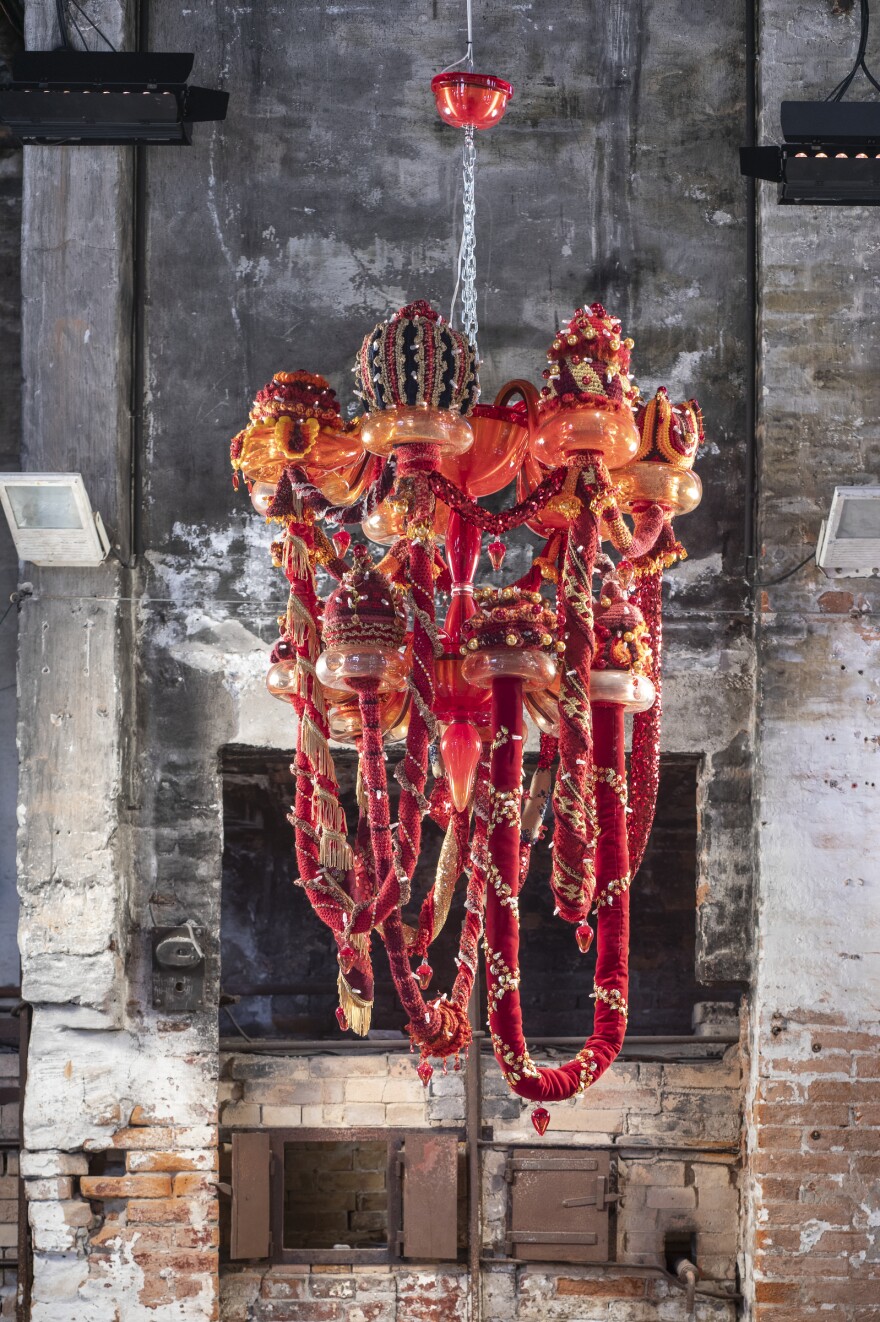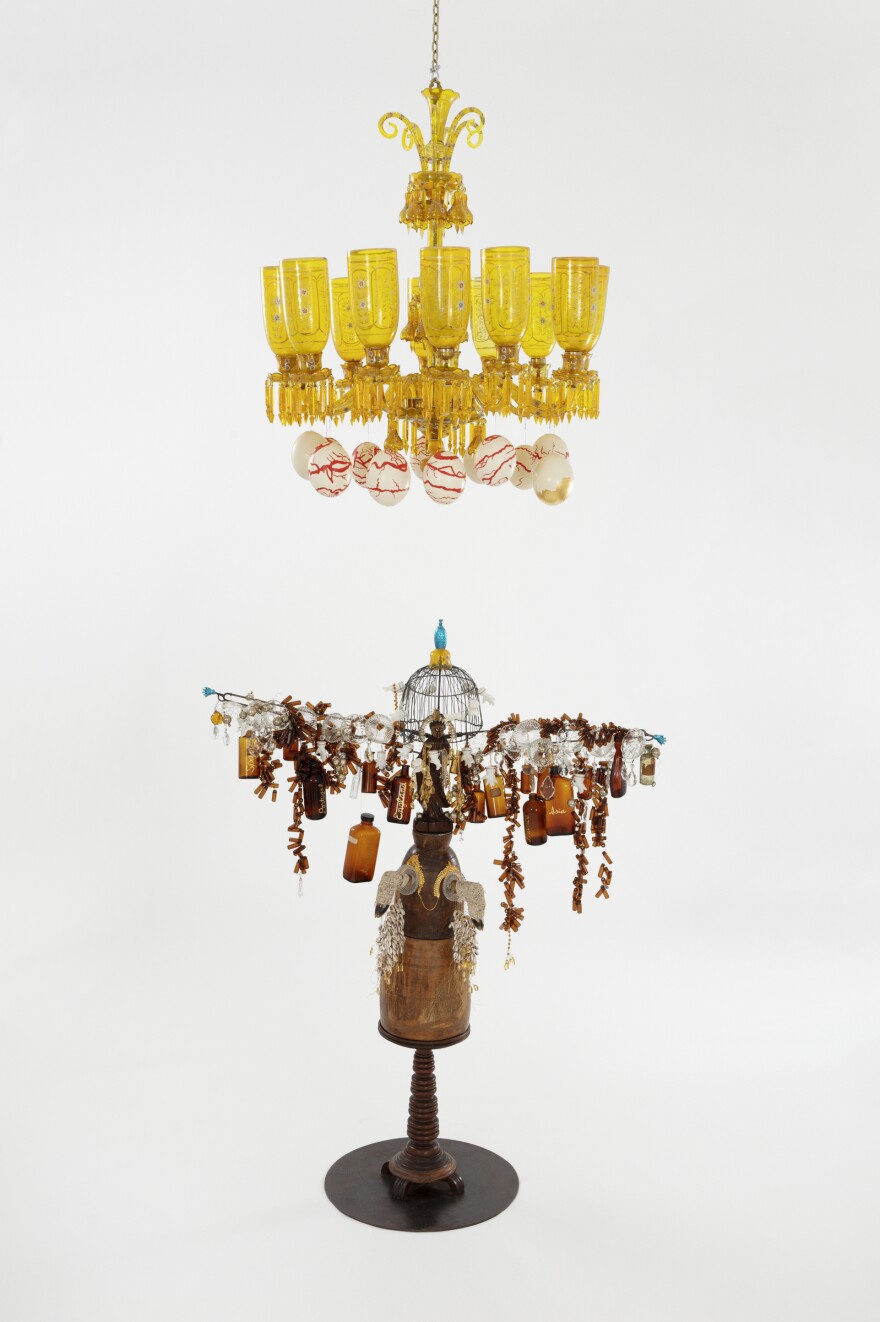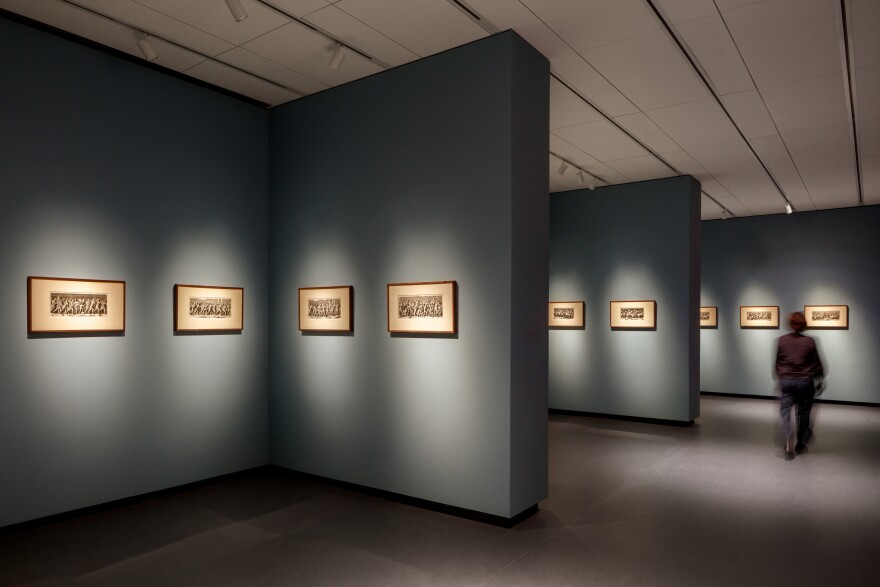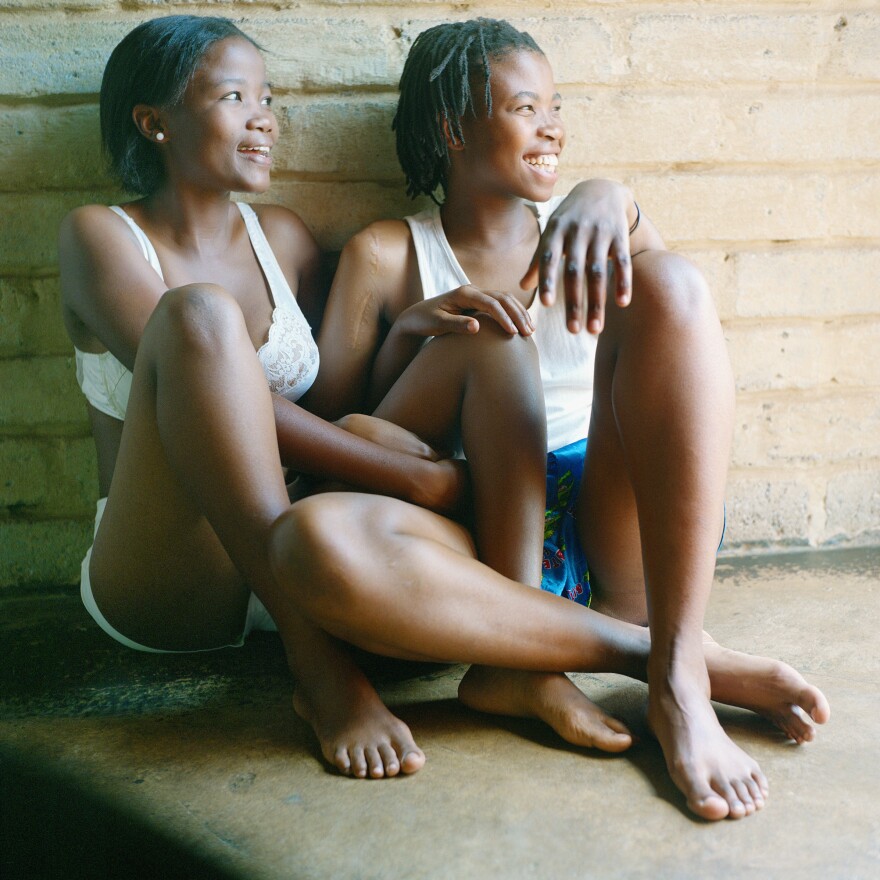The National Museum of Women in the Arts reopens Saturday after a two-year, $70 million renovation to better serve the institution's role as a "megaphone" for equity among women and other gender-marginalized artists.
In the nearly four decades since the museum first opened in 1987, NMWA leaders are quick to point out, there have been improvements, but also setbacks.
"While the discourse has progressed since the museum was founded, gender and intersectional racial inequality remain pervasive in the art world," director Susan Fisher Sterling told NPR's Morning Edition.
The inaugural exhibition, "The Sky's The Limit," punches the proverbial glass ceiling with contemporary sculptures that dangle from the ceiling and run up the walls. They include recent acquisitions and works exhibited for the first time that are largely process-focused and often use found materials associated with home life or particular lifestyles or cultures. Sonya Clark's Curls (2005) features zigzagging garlands of black combs that examine African American identity. While Cornelia Parker's Thirty Pieces of Silver (exhaled) Sugar Bowl (2003) comprises 30 silver items like candlesticks and silverware flattened by a 250-ton industrial press. The silver objects were then arranged in a circle dangling just inches from the floor by nearly invisible wire from the ceiling. Other works use materials like blown glass, wool, faux flowers and cedar wood.

Mariah Robertson's 9 (2011) is one of the "sleepers" in the show, according to senior curator Katie Wat.
"The really exciting thing about this piece is when it came into the collection, it was literally spooled up... and I thought, I'm sure it's cool, but I really don't have any idea what it looks like," Wat said.
When museum staff unfurled the piece, "it just exceeded every expectation," she adds. An abstract rush of color fills photosensitive paper that stretches out 160 feet and folds over trapeze bars. When creating works like these, Robertson dresses up in full protective gear as she splashes chemicals, scratches at the paper or exposes it at low light, essentially creating photographs without a camera.
"That was part of why I was so inspired to choose her for this exhibition," Wat added. "I think about women who have to wear a hazmat suits and make the artworks that they create. That says a lot to me and I love that sort of physicality that you mentioned. I think that's a really big part of this artwork."

A piece by India-born, New York-based Rina Banerjee fully embraces the "more is more" aesthetic, starting with its title: Lady of Commerce—wooden. Hers is a transparent beauty, her eager sounds, her infinite and clamorous land and river, ocean and island, earth and sky . . . all contained, bottled for delivery to an open hole, a commerce so deep while large her arms fool stretched too wide and her sulfurous halo—a ring of glass, metal, stone retire to a sun of fire.
Museum staff just call it "Lady of Commerce." And then, there's the sculpture itself, created out of a variety of found objects. These include a Victorian era chandelier from which hang painted ostrich eggs atop a wooden dress form with a bird cage, a Buddhist figure, vintage amber-colored glass dangling from metallic arms from which protrude porcelain doll hands... you get the picture.
"It goes on and on and on and on. It is such a show-stopping piece," Wat said.
From old to new

Revamping a historic building is no easy task. And with this museum, we're talking about a century-old site that once served as a Masonic temple where women members were banned. Now it hosts the world's first museum solely dedicated to championing women artists.
For the building's first full renovation since the museum was established, Baltimore-based Sandra Vicchio's team added nearly 2,500 square feet of gallery space, a new area for researchers and education programs, infrastructure and storage upgrades, as well as enhanced visitor accessibility.
Mechanical systems, like the heating and cooling, also got an upgrade. Narrow slits replace bulky vents.
"When I first started working here, I noticed that there were air returned vents at the bottom of some of the gallery walls. And it was so disappointing because very often we'll have a large painting that would need to sort of hang over an air vent, which of course, we can't do," Wat recalled.
But the biggest change is the reimagining of gallery spaces, from cramped viewing areas to rooms that breathe with nooks for more intimate viewing.
Stepping out of the third-floor elevators, visitors are greeted by Nikki de Saint-Phalle's Pregnant Nana (1995), a painted marble sculpture with arms outstretched that is more than five feet tall and weighs over a ton. Behind her, there's a sampling of a collection that's grown from just 500 artworks when the museum got started to more than 6,000 today. Most are private gifts — spanning five centuries of creative output.

Pointing to the breadth of the collection across the centuries, another gallery shows a series of 25 prints engraved in 1675 by Antoinette Bouzonnet-Stella, The Entrance of the Emperor Sigismond into Mantua (published in 1787). The engravings, commissioned by King Louis XIV's advisor Jean-Baptiste Colbert, reproduce an Italian Renaissance stucco frieze for the Palazzo Te in Mantua.
Elsewhere, there's a selection of works by Hung Liu (1948–2021), who grew up during the Cultural Revolution in China before immigrating to California in 1984. Her images are inspired by black-and-white photographs and traditional Chinese imagery to create large-scale portraits of refugees, orphans, laborers, women soldiers and sex workers.
These themes also point to the museum's ownraison d'être.
"This is a museum. It's also a megaphone. We're also about advocating for greater visibility, greater opportunity for artists of all genders," Wat said.Across the collection, artists include trans and non-binary creatives, like South Africa's Zanele Muholi, whose photograph of two smiling young women in love hangs in the mezzanine.

Lilly Quiroz produced and Jan Johnson edited the radio version of this story. Treye Green edited the digital version.
Copyright 2023 NPR. To see more, visit https://www.npr.org.



